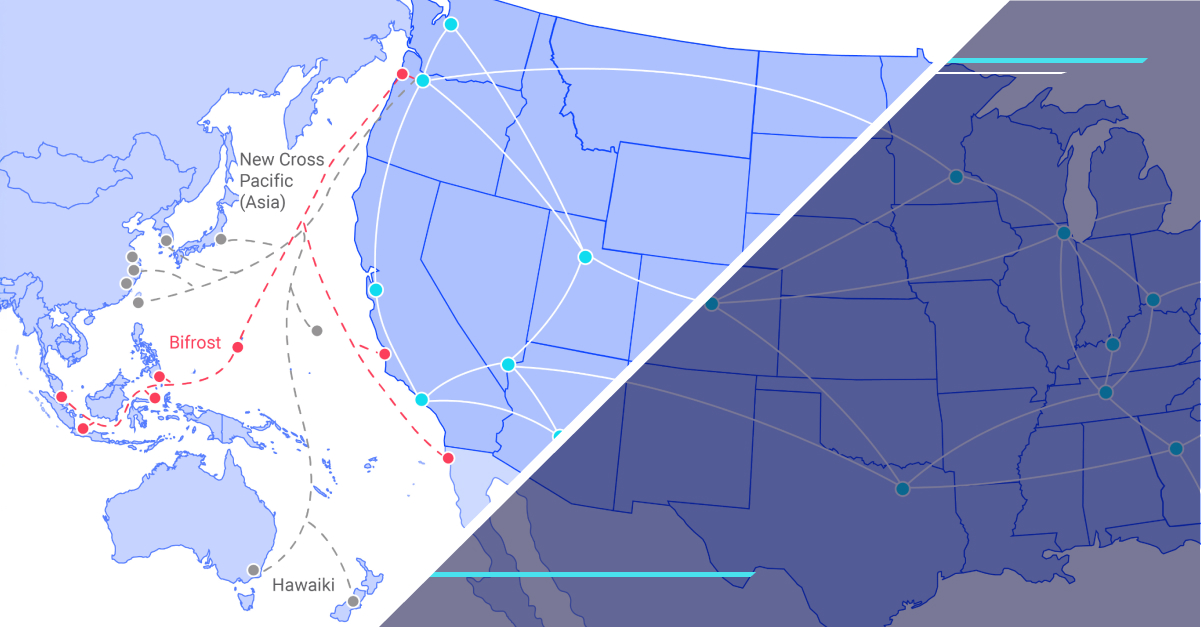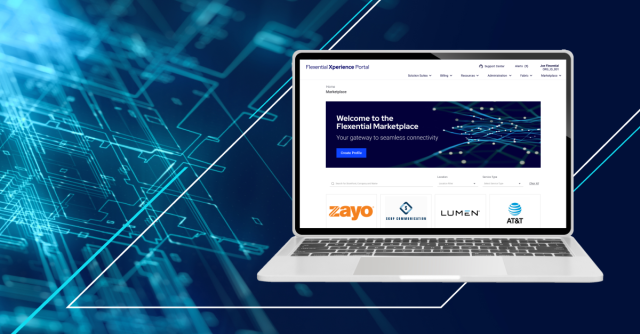What is an interconnection marketplace?
An interconnection marketplace is a platform that makes it easier to connect with carriers, cloud providers, and partners through a single data center ecosystem. Instead of managing every link separately, you can choose the connections you need and scale them as your business grows.

If you're running hybrid IT or multicloud, you've probably felt the strain of adding new services or locations. Each connection can mean extra cost, long lead times, and more points of risk. An interconnection marketplace helps remove that friction by giving you faster access to secure, high-performance links.
In the sections ahead, we'll explain how an interconnection marketplace works, how partner interconnect fits into the picture, and why this model has become central to modern digital infrastructure.
Understanding modern-day digital ecosystems
Interconnection is at the core of modern digital infrastructure. It makes it possible for data to move smoothly between networks, applications, and services, ensuring that systems in different locations can work as one. This is critical because most organizations now depend on a mix of environments that include public clouds, private data centers, and partner platforms.
Today's digital ecosystem looks very different from what it was even five years ago:
- Organizations are connecting more services across more locations
- Applications that used to live in one data center now span multiple clouds
- Teams that worked in a single office now collaborate from dozens of locations
- Partners and vendors require direct, secure connections for real-time collaboration
All of this creates a web of dependencies that traditional point-to-point connections simply can't handle efficiently.
The way interconnection is delivered has changed over time. In the past, it often meant a small number of private circuits linking major facilities. Today, business ecosystems are more distributed and dynamic. Cloud adoption, remote collaboration, and edge computing have driven the need for far more connection points, and for those connections to be faster and easier to manage.
For data center providers, these demands have raised the bar. Customers expect more than reliable space and power. They also expect access to networks, cloud on-ramps, and technology partners through flexible models that make connectivity simple to provision and adjust. What used to be called colocation interconnection has evolved into something much more sophisticated.
This shift has created a stronger need for interconnected ecosystems, where digital services and partners work together seamlessly, and it is what has driven the rise of interconnection marketplaces.
What is an interconnection marketplace?
An interconnection marketplace is a platform that allows organizations to establish and manage network connections inside a data center ecosystem. Rather than arranging every circuit one at a time, enterprises can choose from a catalog of available partners and services, and then provision connections as needed. This approach makes connectivity faster, more scalable, and easier to control.
Think of it like an app store, but for network connections. Instead of downloading apps, you're selecting carriers, cloud providers, and partners, then activating the connections you need.
How it works
The marketplace functions as a centralized environment where carriers, cloud providers, and enterprise partners are all accessible through the same interface. The process typically follows these steps:
- Browse available providers in the marketplace catalog
- Select the service type and bandwidth requirements
- Configure connection parameters through the interface
- Activate the connection with automated provisioning
- Monitor and manage through the centralized dashboard
Most of the complexity happens behind the scenes. You see a clean interface with available options. The platform manages the physical infrastructure, coordinates with providers, and handles the technical details of establishing connections.
Key benefits
An interconnection marketplace offers several advantages compared to traditional provisioning:
- Speed: Connections can often be activated in minutes rather than weeks
- Flexibility: Bandwidth and services can be scaled up or down based on demand
- Choice: Access to a wide range of carriers, clouds, and partners from a single point
- Cost control: Eliminates the expense of managing multiple individual contracts and circuits
- Security and performance: Private links reduce exposure to the public internet and improve reliability
- Simplified management: One portal to monitor and manage all your connections
These benefits play out differently across industries. You can see real examples of this in action through various interconnection examples where enterprises have improved efficiency, scaled faster, and strengthened security.
Physical and virtual connections
Most marketplaces support both physical and virtual connection types. Physical cross connects remain the standard for direct, fixed links inside a data center. Virtual cross connects, by contrast, are software-defined and can be established more quickly, often without new cabling. Together, these options give enterprises the ability to balance permanence and agility, depending on the workload or application.
If you need guaranteed performance and have predictable traffic patterns, physical connections make sense. If you need flexibility and faster provisioning, virtual connections are often the better choice.
Partner interconnect: a key component
An interconnection marketplace is valuable not only for accessing carriers and cloud providers but also for building direct connections with partners. Enterprises depend on ecosystems of technology providers, service platforms, and customers, and partner interconnect creates the private pathways that make these relationships work.
Partner interconnect has become essential because business partnerships are increasingly digital. Whether you're integrating with a payment processor, sharing data with a logistics partner, or connecting to a customer's systems, these connections need to be fast, secure, and reliable.
Through the marketplace, these partner interconnect relationships can be identified and established more quickly. Instead of coordinating contracts and physical builds with each partner, organizations can select from a catalog of available options and activate the services that fit their needs. This approach strengthens collaboration, supports new business models, and reduces the time it takes to connect with critical partners.
The role of data center interconnect and cloud interconnect
Partner interconnect relies on other forms of connectivity to be effective. Data center interconnect provides the underlying links between facilities, ensuring that workloads and applications remain available across locations. Cloud interconnect delivers private, high-performance access to public cloud services.
Cloud interconnect deserves special attention because it's become so central to how organizations operate. These private connections to cloud providers offer better performance, enhanced security, and more predictable costs compared to internet-based connectivity. When you combine data center interconnect with cloud interconnect, you get a flexible foundation that can support partner interconnect anywhere your business needs to go.
Flexential Marketplace
The Flexential Marketplace transforms how organizations discover, establish, and manage connectivity within the FlexAnywhere ecosystem. Rather than manually coordinating circuits or digging through vendor catalogs, users can access a digital environment to browse providers, select services, and activate connections. Flexential Marketplace is part of our broader effort to simplify interconnection through automation and choice.
The difference is in how it's built. Instead of bolting marketplace features onto existing systems, the Flexential Marketplace is an integral part of the FlexAnywhere platform from the ground up.
What sets it apart
- On-demand provisioning: Users can activate connections with guided workflows; no long lead times or fragmented processes
- Integrated with FlexAnywhere: The Flexential Marketplace is layered on top of the FlexAnywhere platform, which combines colocation, cloud, connectivity, and other services into a unified model
- Carrier- and partner-neutral ecosystem: Within the Flexential Marketplace, customers see a catalog of available providers, filtered by location, service type, or name, enabling choice and flexibility
- Cost and time efficiency: By reducing manual and operational overhead, enterprises can reduce provisioning delays and avoid the complexity of negotiating each link
- Scalability and reach: The Flexential Marketplace complements Flexential high-density connectivity and extensive network capabilities, which support both physical and virtual connections across its footprint
Supporting innovations and enhancements
Flexential continues to evolve its interconnection offerings to drive more value through the Flexential Marketplace:
- Interconnection Mesh via Flexential Fabric: Flexential now enables multi-site, any-to-any connectivity with a single port. Users can provision and manage redundant, scalable networks across multiple locations without manual configurations
- High-density, high-performance backbone: Flexential supports a 100 Gbps network, enabling high-throughput interconnectivity within and across its data centers
- Ecosystem expansion and partnerships: The Flexential Marketplace is built to accommodate growth in partners and services, reinforcing the role of Flexential as an interconnection hub
- Workflow automation: Advanced automation reduces provisioning time and eliminates the configuration errors that often come with manual processes
- API integration: Programmatic access means you can integrate Flexential Marketplace capabilities with your existing management tools and workflows
Choosing the right interconnection strategy
Interconnection marketplaces are becoming central to how enterprises build and manage their IT infrastructure. They remove the friction of one-off provisioning, give IT teams a broader range of options, and ensure that connections are secure and scalable. For organizations running hybrid IT or multicloud strategies, this model delivers the speed, flexibility, and reliability needed to keep systems aligned with business demands.
The marketplace approach represents a fundamental shift from the way connectivity has traditionally been delivered. Instead of treating each connection as a separate project, organizations can now think about connectivity as a service that scales with their business.
The Flexential Marketplace brings these benefits together in a single platform. By combining on-demand provisioning, a partner-neutral ecosystem, and integration with the FlexAnywhere platform, we make it easier to connect with the providers and partners that matter most to your business.
Ready to explore the possibilities? Learn more about the Flexential Marketplace, our interconnection services, or contact our team to discuss your connectivity needs.
FAQs
What is an interconnection marketplace?
It is a platform that allows organizations to establish and manage private connections to carriers, cloud providers, and partners within a data center ecosystem.
How does an interconnection marketplace differ from traditional cross connects?
Traditional cross connects are physical, point-to-point links that require manual setup. An interconnection marketplace centralizes these options in one place and often includes virtual connections that can be provisioned on demand.
What is partner interconnect?
Partner interconnect refers to private connections established through a marketplace to link with carriers, cloud providers, or technology partners. It enables faster, more secure collaboration without the need for separate builds.
What is the difference between dedicated and partner interconnect?
Dedicated interconnect provides a direct, private connection between your infrastructure and a single provider, offering guaranteed bandwidth and performance. Partner interconnect uses shared infrastructure within the marketplace to connect with multiple providers, offering more flexibility and cost-effectiveness for variable workloads.
Why are interconnection marketplaces important for hybrid IT and multicloud?
They simplify the process of linking multiple environments. IT teams can extend networks, connect to cloud services, and add new partners quickly while maintaining security and performance.
How do I choose the right interconnection strategy for my business?
Consider your performance requirements, budget, scalability needs, and the number of providers you need to connect with. Organizations with predictable, high-bandwidth needs may prefer dedicated connections, while those requiring flexibility and multiple provider access benefit from marketplace-based solutions.
Does the Flexential Marketplace support both physical and virtual connections?
Yes. Customers can choose the type of connection that best fits their workload or application, balancing the permanence of physical cross connects with the agility of virtual connections.





